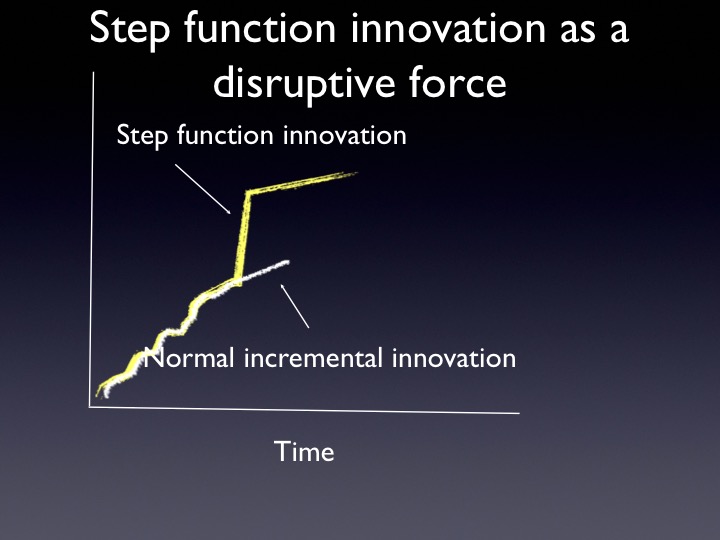Disruption is often a result of a linear trend such as a slowly improving technology. This is how people often think of disruption. The fact that touch screen iPhones became a rage overnight and led to a new era of smartphones is one such example. Sometimes, this trend can also be a slow moving trend such as the slow acceptance of index funds over actively managed mutual funds.
But did you know that sometimes a step function rather than a linear trend causes disruption? I fondly remember how I drove step function disruption within my organization; I now see that happen in many contexts.
Back in the mid-1990s, legacy systems in Citibank India were slow to change and took 18-24 months for a meaningful upgrade. However, business needs continued to evolve on a daily basis. As a result, there was a constant gap between what the business needed and what IT could provide. This gap led to significant issues for the corporate banking business managers. For example, when the cash management business decided to tweak their services, it took them 30-40 days to understand how that business change affected their profits. It was similar to a malfunctioning water knob in a shower that changes water temperature with a long delay after you have shifted the knob. You experience an uncomfortably cold shower as well as scalding hot water on your way to the ideal water temperature. At Citibank back then, it was a similarly painful experience for everyone involved; business managers were frustrated due to delays as well as poor data quality whereas financial control folks were unable to provide the needed service due to a lack of adequate systems.

My solution to this problem was to create an application layer on top of the legacy systems and use a dedicated IT group to update the top layer in line with the evolving business needs. It allowed us to meet the rapidly changing business needs in a timely fashion. As a result, the need for the IT department was significantly reduced; akin to disruption in any market.
Although this is an internal example of disruption, this is becoming common in the marketplace. Consider the storage media business where storage capacity could change only in a step function; you could increase the hard disk storage in some logical increments which became the norm. Consequently, there was always an excess capacity and wastage. Cloud storage solved this problem and became a disruptive force for many storage companies. Similarly, in the 1980s, mini steel mills allowed a much smaller incremental change in steel capacity and became a disruptive force for integrated steel producers.
While a step function on the supply side could be the constraint that invites a disruptor, a step function innovation on the supply side can also be a disruptive force when competing with a linear innovation norm in an industry. When the digital imaging technology was evolving, camera makers had a hard time delivering 1 Mega Pixel at under $1000 price point. This prevented mass acceptance of the camera among consumers. Only after the technology moved from CCD to CMOS could the camera makers provide a 1mega pixel camera at consumer price point. This step change innovation was a critical factor in digital imaging becoming an acceptable imaging technology for consumers. In essence, it was a step change innovation that eventually accelerated disruption in the imaging industry.

In short, a step function innovation can sometimes be a barrier that invites disruptors and at other times can be a disruptive force. Does your business face a step function which could eventually lead to disruption? Is it a barrier or a disruptive force?





Please note: I reserve the right to delete comments that are offensive, or off-topic. If in doubt, read my Comments Policy.